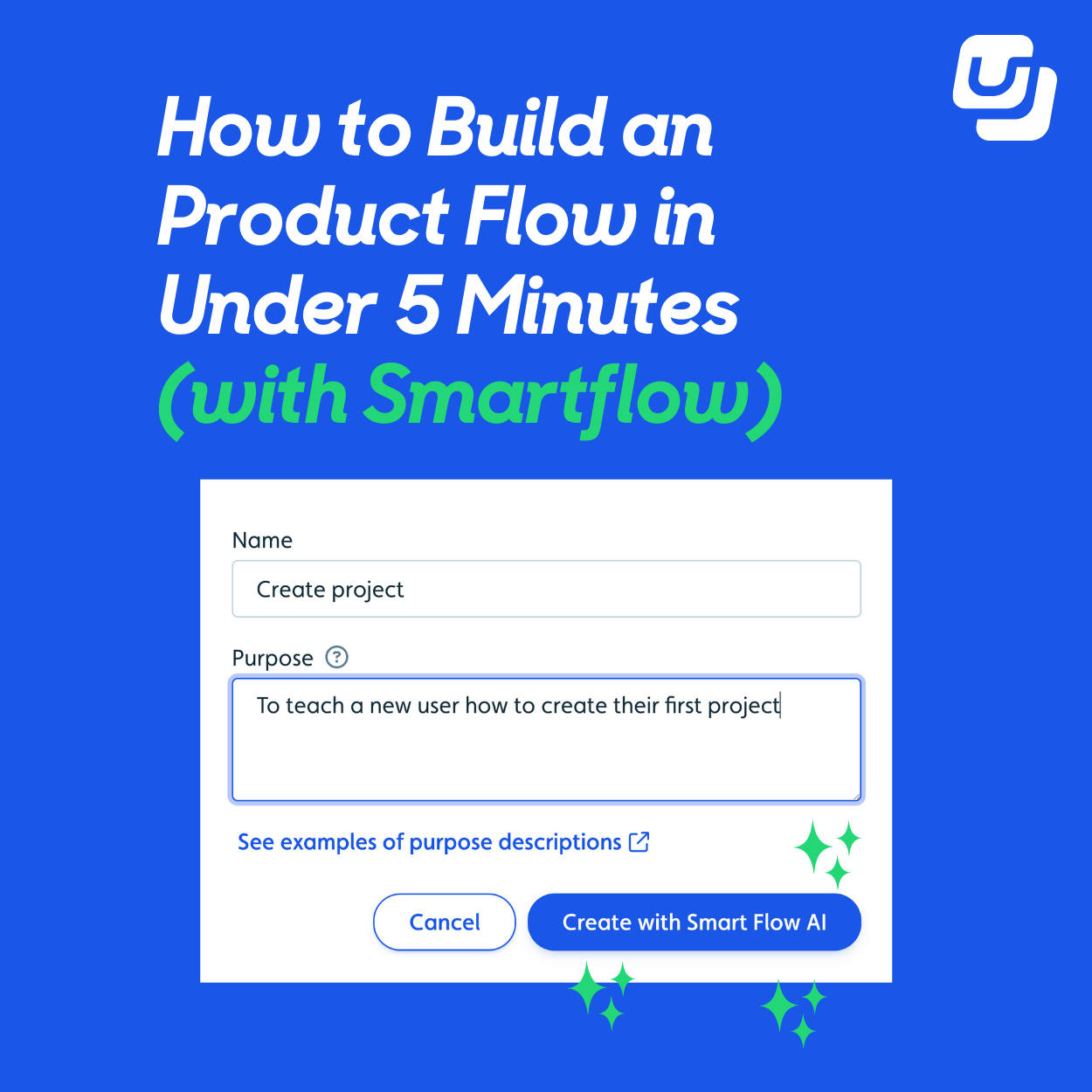Today we're proud to release a new powerful Userflow feature: No-code Event Tracking.
We've been wanting to provide our non-technical users with an easy way to track what end-users do in their apps, without having to ask their developers to instrument their code with track() calls.
With No-code Event Tracking, users can set up event trackers directly from our UI, without code. A tracker consists of a condition (under which circumstances the tracker should fire) and an event (which event should be tracked).
Example: Track a "Project Created" event when the "Create project" button is clicked. Or track an "Upgrade Prompt Seen" event when a text prompting the user to upgrade their plan becomes visible on the page.

Tracked events can be used to auto-start flows, mark checklist tasks as completed, and can be streamed to analytics providers such as Amplitude and Mixpanel.
No-code Event Tracking vs. explicit/implicit tracking
There's an ancient (in web terms) battle between explicit tracking and implicit tracking.
Explicit tracking is where your developers instrument your app with track() calls that explicitly track events when users take certain actions in your app, such as clicking a button. It has the benefit of being very clean and very robust. Its downside is that non-technical team members always have to wait for developers to implement tracking, and have a hard time actually verifying the events. Events also can't be analysed retroactively, i.e. you only get data going forward. Popular explicit tracking tools include Amplitude and Mixpanel.
Implicit tracking is where a piece of JavaScript in your app is continually streaming all clicks (and sometimes content, too) from your app to their third-party database. You can then in a no-code fashion tag elements in your app, and the tools can figure out e.g. how many people have clicked a certain button over time. The benefits here are that non-technical team members can analyze usage without bothering developers (besides the initial installation), and that events can be analysed retroactively since all old clicks are stored as well. A large privacy/security risk concerning implicit tracking is the possibility of accidentally leaking sensitive information to the third-party provider. Another common criticism is the messy data that it generates. Popular implicit tracking tools include Heap and Pendo.
Userflow's No-code Event Tracking sits somewhere in-between explicit and implicit tracking:
- It's fast to get started with. Non-technical team members can set up trackers easily via our no-code UI. No need to wait for developers.
- It's privacy/security-friendly. All trackers run 100% client-side. No content leaves your users' browsers.
- It's more robust/accurate. Regular implicit tracking is usually limited to matching elements via very simple CSS selectors, which are brittle. Since our trackers run client-side, we can employ much more sophisticated algorithms for recognizing elements, and support multiple conditions that have to be true at the same time.
- It's clean. We only track what you ask us to track, meaning your data is as clean as you make it.
The only downside No-code Event Tracking has vs. regular implicit tracking is that it does not work retroactively. That's to ensure privacy and security compliance. This is also the way things work in the explicit world.
We believe our No-code Event Tracking is a novel solution that will fit well where classic explicit or implicit tracking fall short.
Is Userflow now an analytics provider?
In Userflow we only provide very basic analytics around how many times each event has been tracked and by which users.
We still strongly recommend pairing Userflow with an advanced analytics provider such as Amplitude, Mixpanel, Heap or similar. These tools allow you to make funnel analysis, compare multiple events, view breakdowns and all sorts of other stuff that we do not want to build into Userflow.
No-code Event Tracking is mainly meant to get SaaS businesses started with event tracking and to better control their onboarding flows based on events.
Video walkthrough
Let's dig into it in this short video!
Read more on the No-code Event Tracking doc page.
CONTENTS













%20(2).png)









